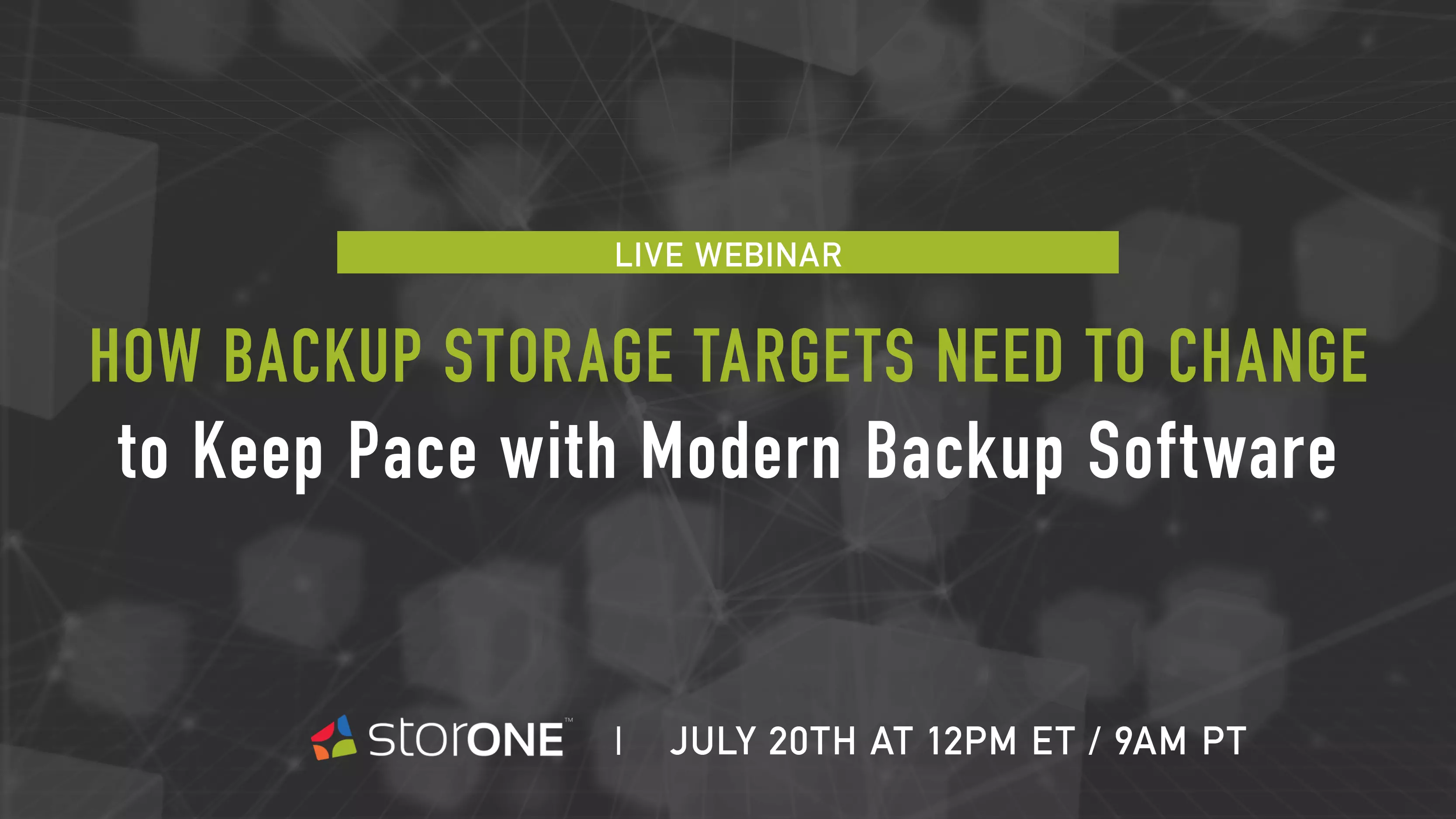Backup software companies like Veeam, Rubrik, and HYCU have been hard at work adding new capabilities, and backup storage targets need to change to keep pace. Features like deduplication, continuous backup, managed replication, and instant recovery are now built-in to most software applications. The common practice of backup storage vendors charging a premium for similar features no longer makes sense. Backup storage targets need to change by eliminating features that are now redundant and adding capabilities that complement some of these new backup software capabilities.
Modern Backup Storage Needs:
- True Capacity Efficiency Not Deduplication
- High-Performance Ingest Backup
- Production-Class Performance and Availability
- Future Flexibility
Backup Storage Targets Need High Utilization, Not Deduplication
Backup storage targets should no longer provide deduplication. Most backup software solutions provide deduplication and block-level incremental backups. They are eliminating much of the capacity redundancy before it ever reaches the storage device. Instead, backup storage solutions need to deliver very high utilization of the available capacity without impacting performance.
Most backup storage systems experience significant performance impact as their capacity exceeds greater than 55%. Deduplication is just one reason companies start to see a performance impact at such a low capacity level. The primary reason is the lack of efficiency of the storage software itself. Backup storage vendors follow the same easy path to market as primary storage competitors do, by layering in a feature like deduplication on top of legacy storage software code.
Modern backup storage systems don’t need deduplication. The backup software provides it or something very similar like block-level backups. Modern backup storage systems need to deliver 90% capacity utilization without performance impact. The 35% capacity utilization delta between the two systems is significant. For example, on 1PB, you could be wasting 400TB’s or more of capacity.
Backup Storage Targets Need to Leverage High-Density Drives
True capacity efficiency also requires supporting high-density hard disk drives (HDD) without compromising data protection or performance. Again, because most legacy backup storage vendors use old storage software code, most customers shy away from using these cost-effective HDDs. The concern is RAID rebuild times. If there is a drive failure with legacy systems, it can take days to bring the system back to a fully protected state.
To feel comfortable embracing high-density HDDs, backup storage target vendors need to deliver rebuild performance in two hours or less, no matter the density or percentage of utilization of the drives. These rapid rebuild times enable customers to embrace high-density drives to lower costs without putting data at risk.
Backup Storage Targets Need High-Performance Ingest
Meeting the backup window is always critical and backup software, thanks to changed-block or block-level image (BLI) backups, sends less data per backup job, enabling more frequent backups and faster completion times. While the backup storage target may not receive as much data per job, it receives a different type of data stream than in the past. Backup jobs used to have large sequential IO patterns. Now, thanks to BLI, the backup job consists of many small sequential streams of data.
In addition to the new semi-sequential IO streams, there are also still large sequential jobs coming from either legacy backup applications or database dumps. The variety of IO streams makes it difficult for hard-drive-based backup storage targets to maintain performance. At the same time, flash pricing is nowhere near the point that organizations can consider an all-flash backup storage target.
Ideally, a modern backup storage target will provide a flash storage area to store the latest copy of data. That flash area must be a tier of storage, though, not a cache. Even with BLI backups, backup data sets are still far too large for a cache to provide any performance benefit. Using flash as a storage tier enables the backup storage target to store operational data for days and, in some cases, weeks before writing it sequentially to a hard disk drive tier. The flash tier provides fast ingest for the various inbound IO profiles and provides time to write sequentially to the hard disk tier for rapid recovery.
Instant Recovery Requires Production Class Performance and Availability
Backup storage targets are no longer repositories for a second copy of data. IT, through the backup software, may call on the backup storage target to run production applications thanks to instant recovery features being standard in most backup applications. When an instant recovery is triggered, the backup software serves the production application data from backup storage. The advantage is that you don’t have to wait for data to transfer over the network. You can start using the application right away. Or can you?
Suppose the modern backup software is connected to legacy backup hardware. In that case, the performance of the instantiated volume running on the backup device may be so bad that it is unusable. The recovery may be instant, but the response time to the users is egregious.
Modern backup storage targets need to leverage the same flash tier they use for ingest performance as an area to host instant recovery volumes. The modern backup storage device needs to manage these two functions automatically. In most cases, you are not running in an instant recovery state most of the time, so you want to use all your capacity for ingesting and staging backups. However, when IT triggers an instant recovery, the system needs to automatically clear enough space on the flash tier for the recovered volume to deliver the same (or better) performance as the original production instance.
It stands to reason that if the instantly recovered application is now running on the backup storage target, the backup storage target must provide production class availability in addition to production-class performance. A modern backup storage target must provide:
- Full high availability
- Protection from media failure
- The ability to protect the application’s data set that it is now hosting
Backup to the Future with Flexibility
Data migration, regardless of the use case, is never pleasant. Migrating a backup storage infrastructure is potentially the most painful of migrations. First, the dataset is likely large (often 10X production storage). Second, you also MUST migrate that backup data, leaving it behind and starting over means losing all of your backup histories.

IT needs to make sure that their next backup storage target is their last backup storage target. Eliminating backup storage migrations requires flexibility. The backup storage system must be able to scale from relatively small capacities (50TB) to very large (20PB) capacities. It must also be able to support drives of varying types and densities without having to create new volumes or under-formatting new drives. As new networking technologies come to market, IT should add the appropriate card to the existing storage controller instead of being forced to buy a whole new system. Finally, as the capacity requirements exceed the bandwidth of the backup storage target, the solution needs to upgrade storage controllers without forcing you to buy an entirely new storage system.
Backup Targets need this flexibility because backup software is not consolidating. Purpose-Built Backup software solutions are increasing in popularity, so the best solution for the customer is to consolidate with a flexible backup storage target, one that may eventually consolidate archive and production workloads.
Conclusion
Backup storage must change so that organizations can enjoy the full benefit of the many innovative backup software solutions on the market. The old must-have features are irrelevant, and now customers need to focus on keeping costs down, lowering backup windows, and speeding recovery performance.
To learn more, join StorONE for our live TechTalk “How Backup Storage Targets Need to Change to Keep Pace with Modern Backup Software.” Preregister today, and receive our latest white paper, “Beyond Backup – Modern Backup Software Requires Modern Backup Storage,” available exclusively to pre-registrants.





